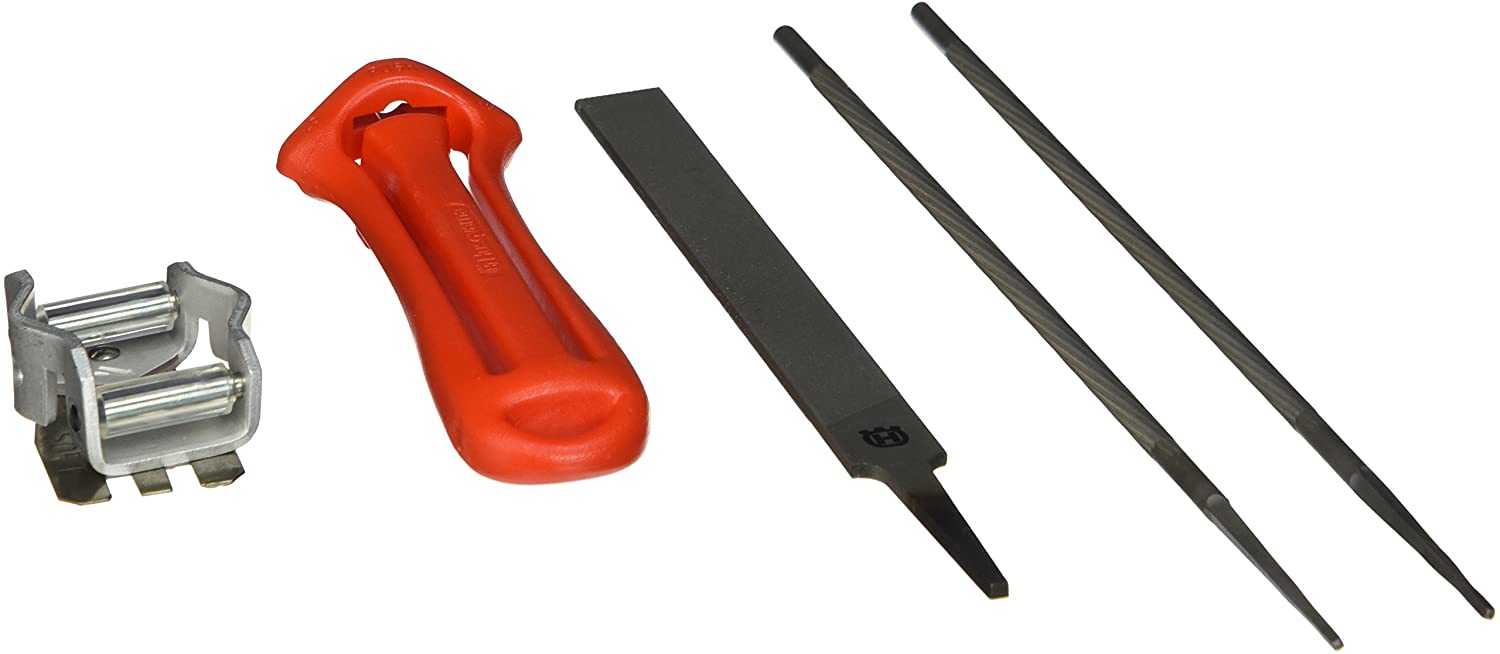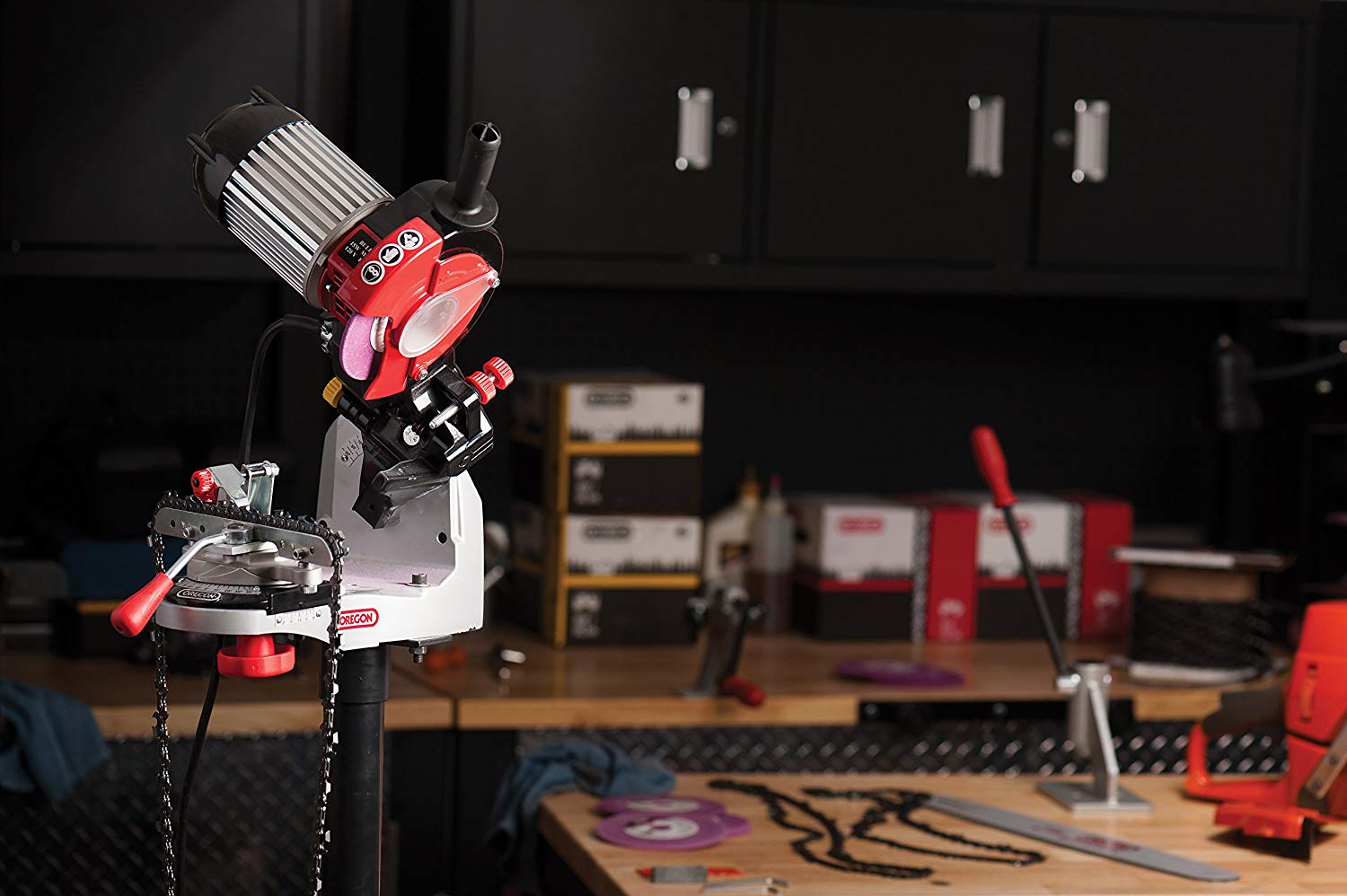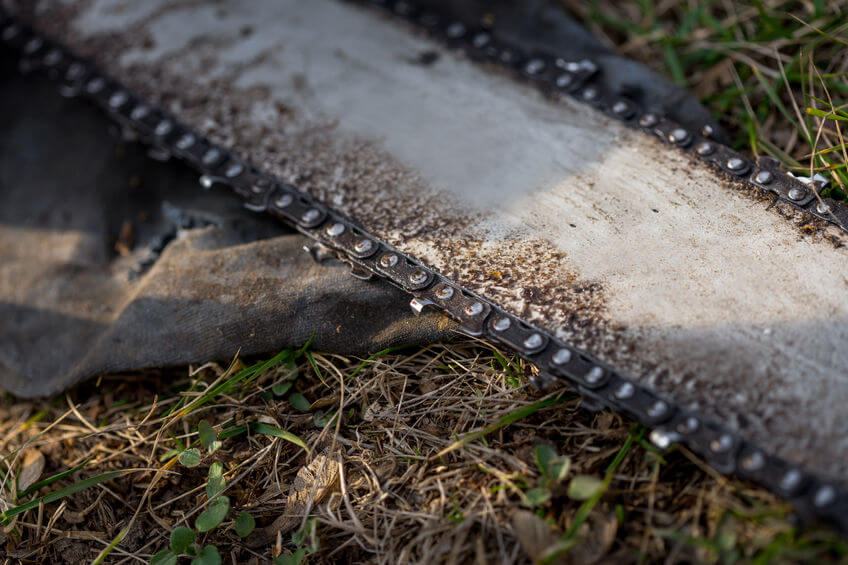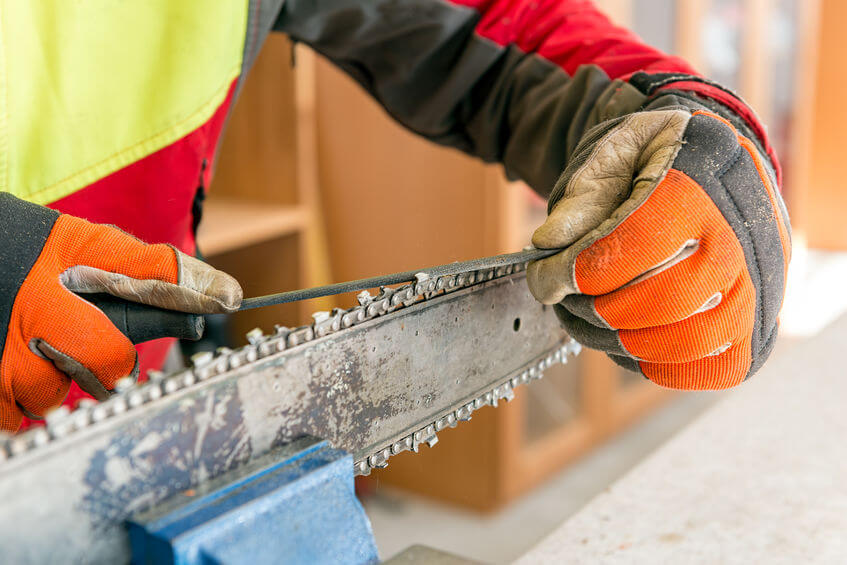- Home
- Chainsaw Maintenance
- Sharpen a Chainsaw
How To Sharpen A Chainsaw
This post may contain affiliate links so I earn a commission.
Looking for more information on how to sharpen a chainsaw?
You’ve come to the right place.
Sharpening a chainsaw is an important step when it comes to maintaining your saw.
If you continuously find yourself using a dull blade, you’re not only going to work more slowly, but you’re going to be putting yourself at a higher risk of injury.
A dull blade is not a safe blade, as it will buck and kick back as it works its way through the wood.
Fortunately, sharpening a chainsaw doesn’t take very long - and it can help you avoid a costly and potentially dangerous chainsaw accident.

There are several ways you can do this which we will explain below.
Use A Filing Kit
Start by picking up a filing kit that is designed for your chainsaw.
Engage your chain brake, then secure your chainsaw by clamping the bar into a vice.
Position your guide between the chain’s rivets.
The arrows of the guide should be pointed toward the tip of the bar.
Use the top plate’s angle on the cutter to guide you.
You will find that the rollers stop you from moving too far into the cutter’s side plate, while also helping you maintain a consistent angle.
Make even, steady, and consistent strokes with your file.
Usually, it will just take a few strokes before the face appears to be shiny and new-looking.

When you file, hold it at a horizontal 30-degree angle allow it roll on the angle preset by roller gauge which will give you an accurate vertical angle.
Count each and every stroke as you work so you don’t
overdo it.
Sharpen a few of the cutters then release the chain brake.
You will need to move the chain forward.
This will reveal additional cutters that can be sharpened.
Reset your brake before you continue to sharpen the rest of the cutters.
After you’ve finished all of the cutters on the first side, flip your chainsaw around.
That way, you may sharpen the ones on the other side.
How To Sharpen A Chainsaw With A Bench Grinder
If you want to save a bit of time and effort, you can also sharpen your chainsaw with a bench grinder.
This is significantly faster than using a file guide (especially if you're sharpening multiple chains at once) and while it’s not quite as exact, the results are excellent.
Set up your bench grinder in a safe place, ideally away from pets and children.
If you are using a bench mounted grinder, you will need to remove the chain from the saw and place it on a rail.
Start your grinder and work slowly.
You can speed up as you continue.
You will need to sharpen each tooth on the chain.
Do this by grinding every other tooth and then rotating the chain to do the rest, or turn the grinder a bit for each tooth and you can get them all at once.

I find it's easier just to sharpen every other tooth before switching to the opposite side.
This way you can sharpen all the teeth on one side without changing the sharpening angle of the grinder, ensuing all the teeth are identical.
Again, work slowly and precisely, watching where your fingers are as you work.
Consider Using A Dremel To Sharpen A Chainsaw
Aside from using a regular bench grinder to sharpen your chainsaw, there are tools out there that will help you make quick work of filing your chainsaw too.
These tools are specially made for chainsaws and have a series of wheels for grinding in common diameters along with a guide that screws to the rotary tool.
This guide controls your cutting angle and depth.
You can also purchase an attachment that fits a Dremel tool.
Since a Dremel tool is something many people own, it's a convenient and cost effective way to obtain a power sharpener for your chainsaw chain.

You’ll want to wear safety goggles and gloves while using this device.
To use it, position the grinding wheel to the cutter, making sure the edge of the guide remains parallel to the cutter’s angle.
Power up the too and grind the cutter down, applying pressure sideways as you slowly count to four.
You’ll sharpen alternating cutters just as you would if you were using a round file.
Then, you can switch sides and sharpen the remaining cutters.
How To File Your Depth Gauges
No matter which technique you use to sharpen your chainsaw, know that you might want to add one more step to your chainsaw care routine - filing your depth gauges.
This will help the gauges remain in their original round shape so that they can feed the cutter teeth more smoothly.
To do this, determine the height of your depth gauge fins at the front of the cutters.
You can use a depth gauge guide.
This will sit on the cutters and has a slotted piece on each end to straddle the fin.
If your fin is taller than your ledge, you should gently file it down with the flat file.
Gentle is the operative word here - don’t apply too much pressure or
it won’t track with any kind of accuracy.
How Often Should You Sharpen A Chainsaw?
For best results, you should sharpen a chainsaw every time you refill it with fuel.
While this may seem like a serious chore, keep in mind that it will keep your chainsaw running more effectively.
This can ultimately reduce the amount of time you spend fighting with your saw to get it to cut properly.

If it’s been some time since you’ve sharpened your chainsaw and you aren’t sure whether it needs to be, consider how well it’s cutting.
A nice, sharp chain will cut wood like butter, even when you’re applying minimal force at the bar.
A dull chain, on the other hand, will seem to settle into the cut without actually deepening it.
If you have to apply any
force to the saw, your saw is probably dull.
Another telltale sign to sharpen a chainsaw is when it's emitting dust instead of chips.
Take other steps when it comes to maintaining and caring for your chainsaw.
For example, you will want to keep your saw out of the dirt when you cut - this can cause it to dull more quickly.
Whenever you sharpen a chainsaw, be sure to wear gloves and eye protection.
Don’t worry - with a bit of TLC and knowledge when and how to sharpen a chainsaw, you will keep your equipment running in tip-top shape.

About the Author
Obsessed with firewood, Nick is behind over 350+ of Firewood For Life's articles, as well as countless reviews, guides and YouTube videos to help readers like you reduce heating costs and create the perfect fire.

